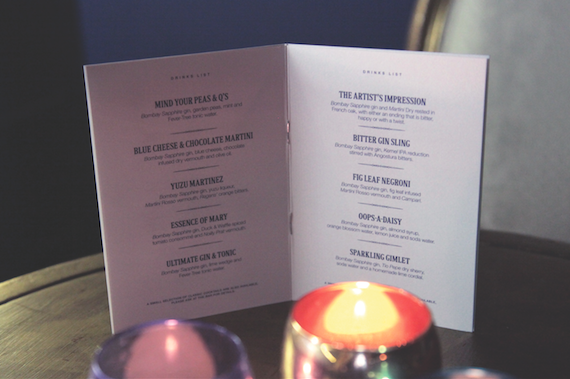“You’ll get Danes insisting on vodka-soda or a Cosmo and others ‘just something with Campari, your choice’, while Swedes, for instance, all order Whisky Sours and Old Fashioneds. All of them,” says Risum-Urth.
How often should lists be changed or updated? “I worked at Callooh Callay (which won Tales of the Cocktail’s World’s Best Cocktail Menu in 2012) and we changed the menu twice a year,” says Diageo’s Montague.
“It was quite a challenge but you don’t want a Sazerac or hot toddy in the summer or a Mojito in the winter. You need a backbone and then seasonal favourites.”
Seasonal updates
Caorunn’s McGlinchey says: “A cocktail list should be updated once or twice a year, but this is dependent on the bar or venue itself. As cocktail lists are dictated by the frequenting consumers, it is important there is a selection of drinks that appeal to their taste preferences.
“For those bars that offer primarily classic cocktails, it is better to introduce occasional promotions on these drinks than to substitute them with newer creations that may not prove to be as well-liked.”
Risum-Urth says: “The main menu at Ruby changes with the seasons, and that works for us. So we launch a list of four new concoctions every three months, change the in-house section and the classics section. So, 12 new cocktails, four times a year. But you can change it as little or much as you want. If your guests are content with a shortlist of recommendations don’t spend too much time on it.”
Bombay Sapphire’s Ware adds: “Some bars change drinks on a daily basis, while others might not have changed the menus for years. I think the approach to take is the demand for the individual drinks on the list.
“Bearing in mind seasonality and such influences, you need to have an offering that brings people back and keeps your stock rotating. I’d aim for a 10 to 14-day stock cycle for cocktail spirits – if they ain’t moving, change it.”
Comas says: “The BBFB training team advocates ‘trickling in’ new products after undertaking initial research into potential new brands, perhaps introducing one new brand per month.
“However, it is important to remember that training is essential with the introduction of any new brand. The Three Point Rule is a tried and tested method that the team promote in the on-trade, whereby every bartender must learn three things about everything they sell behind a bar, including the country of origin, how it is made, and how best to serve it,” says Comas.
So what’s hot? Puns are big in the UK, according to Montague and Ware. “Puns seem to be the trend of the moment, but that starts with a name and works backwards,” says Ware. But Risum-Urth warns: “I get rashes from over-poetic lingo fapping. Wine menus especially have a tendency to fall into the flaming pits of pretentiousness.
“Short descriptions, an easy-to-read font. Please, just black letters on a white background. Tell me what it’s going to cost me and make it easy to navigate the different sections. ‘Wines’ is a great headline for the wine list. ‘We’ve carefully chosen these precariously handcrafted grape wonders to let you explore the wonders of malolacticity’ is not.”




